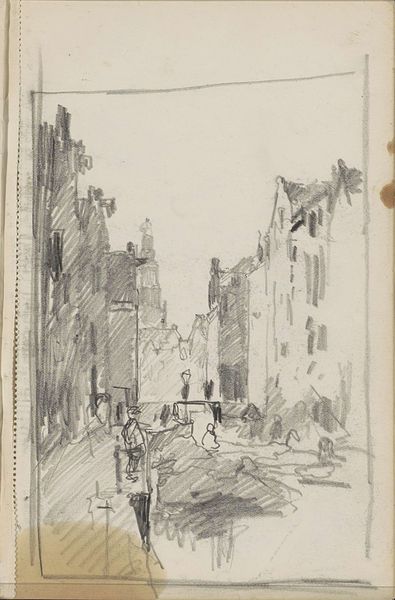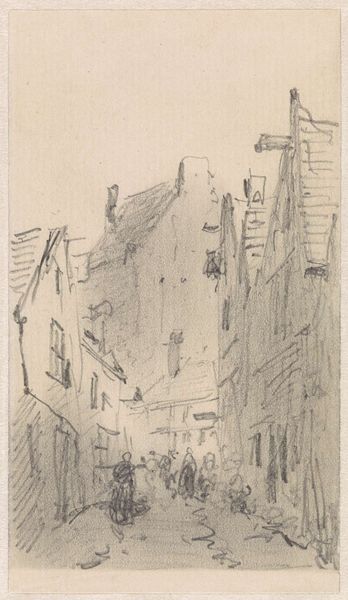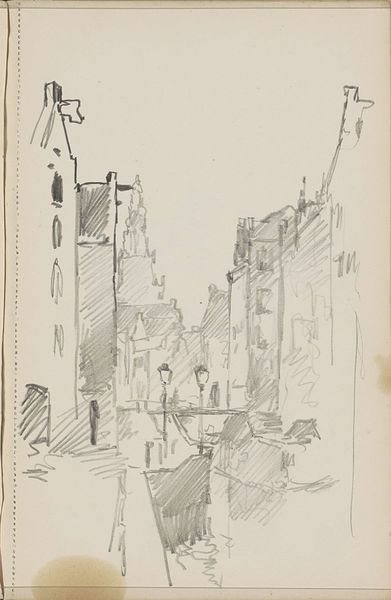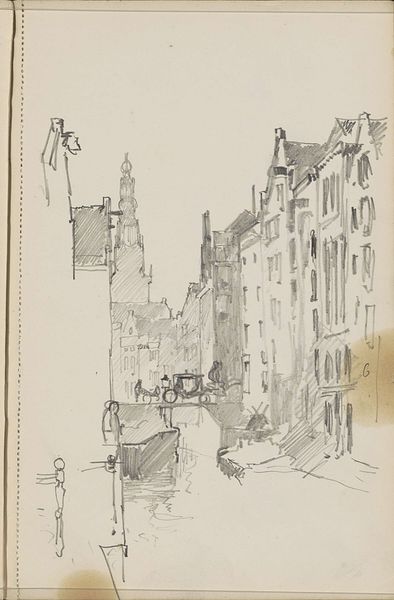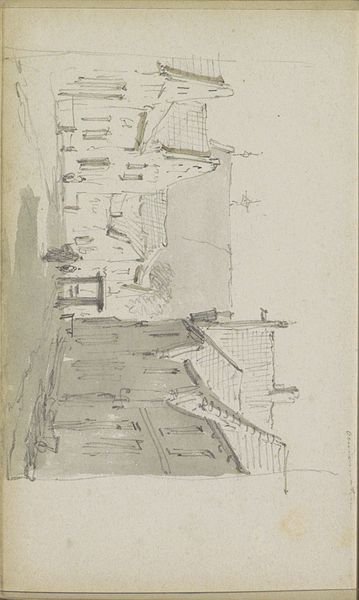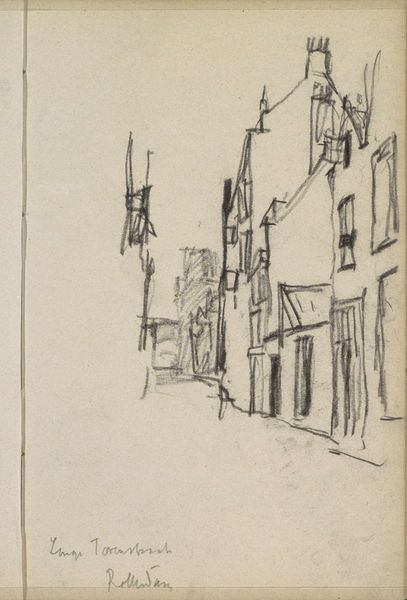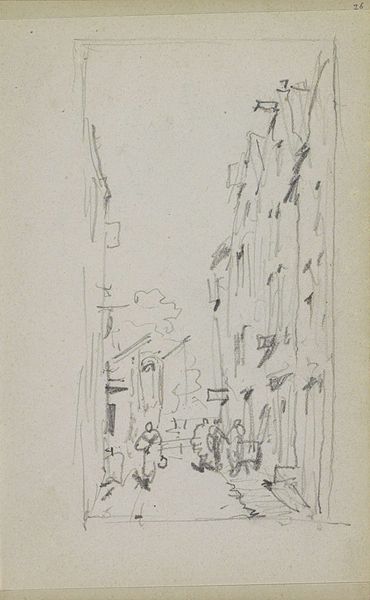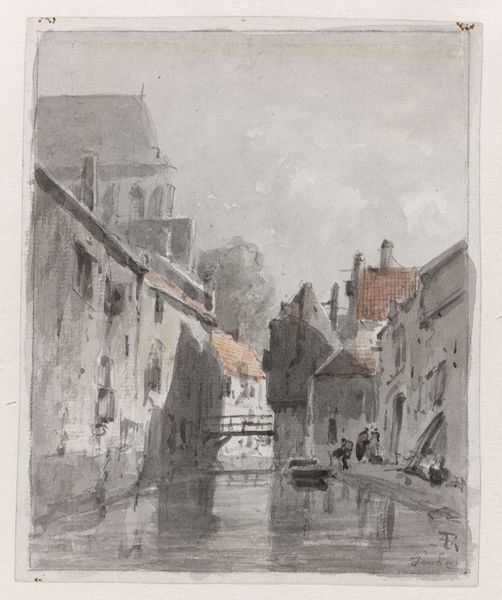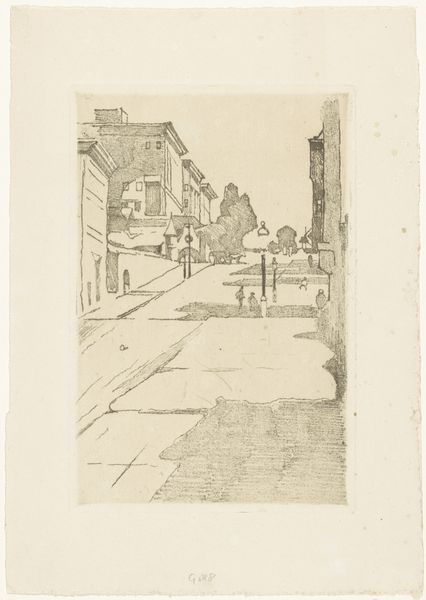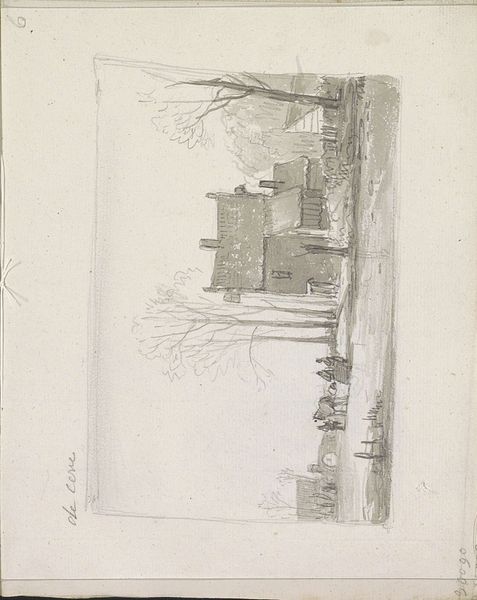
drawing, watercolor, pencil
#
drawing
#
pencil sketch
#
landscape
#
watercolor
#
pencil
#
cityscape
#
watercolor
#
realism
Copyright: Rijks Museum: Open Domain
Editor: This is "Figuurstudie en een stadsgezicht" which roughly translates to Figure Study and a Cityscape, created by Adrianus Eversen sometime between 1828 and 1897. It's a pencil and watercolor drawing. I'm really drawn to how evocative it is with such limited detail. How would you interpret this work considering its time? Curator: It's fascinating to consider Eversen’s choice to pair a figure study with a cityscape, particularly within the context of 19th-century urban growth and social dynamics. The quick sketch above may not be fully resolved, but the cityscape reflects burgeoning urbanism, capturing a sense of place that catered to a growing market for city views, tied to civic pride and real estate interests. Does the relationship between the figure study and cityscape spark any ideas for you? Editor: That’s interesting… I hadn't thought about the cityscape as being linked to real estate! It makes me wonder if the figure study at the top was also perhaps a preliminary sketch for something commissioned. I guess, thinking about it in that light, this page reflects the practical side of being an artist – the combination of personal studies with commercial opportunities. Curator: Exactly! The artist’s book reflects the intersection between art as personal expression and art as a commodity within a specific socio-economic context. Eversen operated in a rapidly changing world, influenced by industrialization and urbanization, catering to an emerging middle class with disposable income. His ability to produce these types of sketches efficiently allowed him to participate actively in that new art market. Editor: I never thought about how social change shapes something as simple as a sketchbook page. I guess art doesn't exist in a vacuum. Curator: Precisely. Hopefully you can pass along that broader point to the audio guide's listeners. This small drawing prompts larger conversations about the nature of art’s public role and its relation to historical forces. Editor: Definitely, this insight offers a completely fresh way to approach the drawing, and I appreciate that! Curator: I am happy to share new perspectives with you. I myself now have a broadened understanding of how to evaluate art's socio-economic role.
Comments
No comments
Be the first to comment and join the conversation on the ultimate creative platform.
